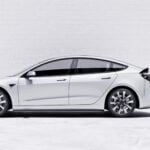AboitizPowers clean energy strategy in the Philippines is a vital part of a larger movement towards renewable energy in the country, reflecting both government policy and public sentiment. Their efforts in expanding their clean energy portfolio to 4,600 megawatts in the next decade, with nearly 1,000 megawatts already in development, are aligned with the national goals and the increasing demand for renewable energy among Filipinos.
The Philippines has set ambitious targets for renewable energy. Under the National Renewable Energy Program, the country aims to reach a 35% renewable energy share in its generation mix by 2030 and 50% by 2040. This is a significant increase from the current levels and requires substantial investment and development in renewable energy infrastructure.
Similar Posts
A recent report suggests that the Philippines has the potential to phase out coal-fired power by 2035 and gas almost entirely by 2040, leveraging its abundant renewable energy potential estimated at around 1,200 gigawatts. This shift towards renewable energy is not only environmentally beneficial but also economically viable, as it could lead to reduced electricity costs and greater job creation. However, achieving these goals will require careful planning, including infrastructure development and international financing.
The public in the Philippines strongly supports the shift to renewable energy. A survey by Pulse Asia Research showed that 85% of Filipinos consider it crucial to increase the use of renewable energy sources. This sentiment is widespread across various social classes. However, there are challenges, such as the need for reliable and affordable electricity, which must be addressed alongside the shift to renewables. The government is urged to ease regulatory burdens and expand transmission to facilitate investments in renewable energy.
In the context of AboitizPower’s strategy, their focus on diversifying their renewable energy portfolio with solar, hydro, geothermal, wind, and energy storage systems is crucial. It aligns with the national renewable energy goals and public sentiment, and it is part of the broader effort to transition the Philippines towards a sustainable and low-carbon future.
















